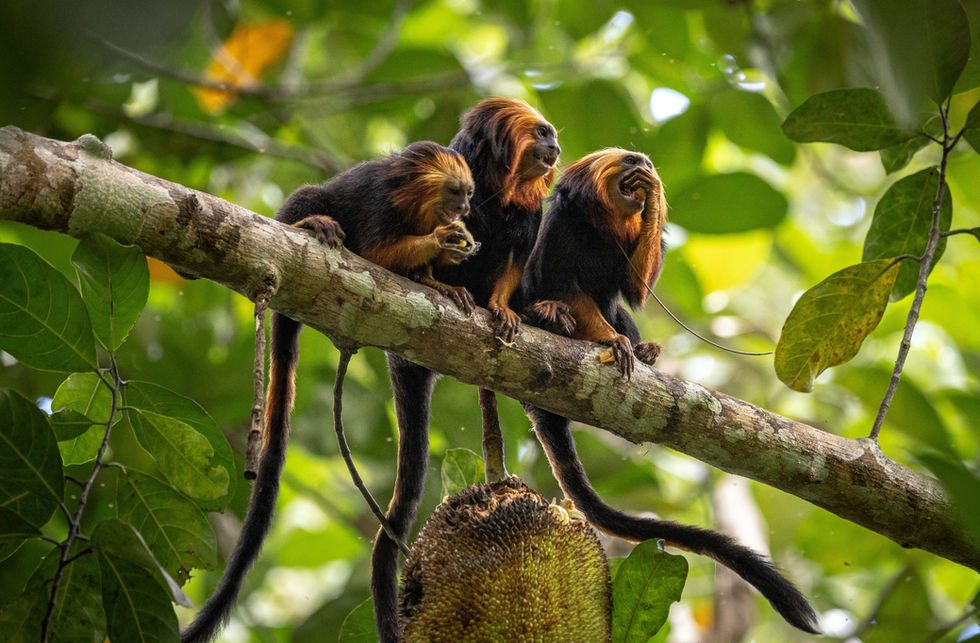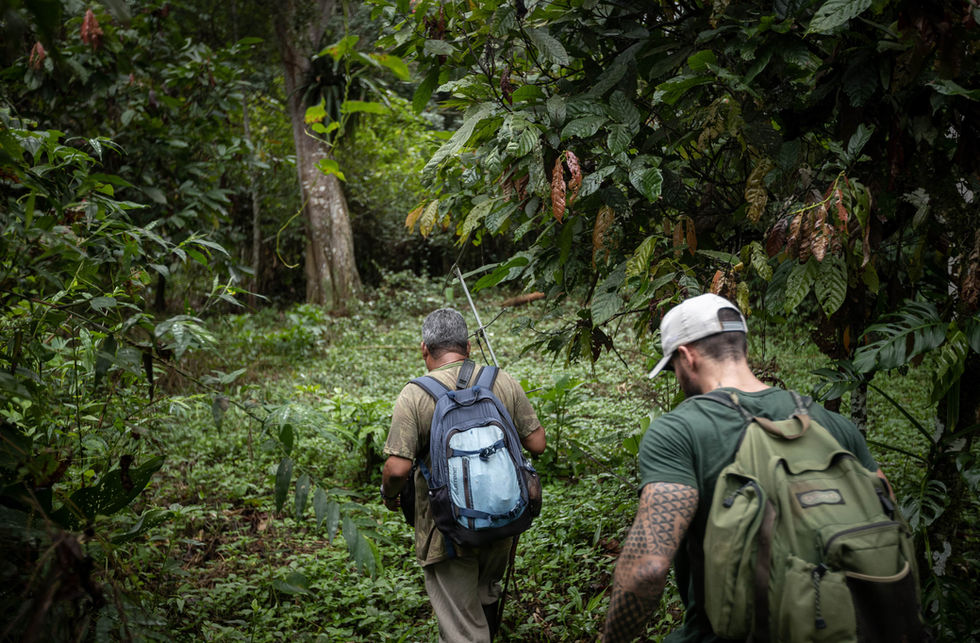
Research for species conservation
A population survey of Leontopithecus chrysomelas in its original range and a vegetation characterization of realized and potential habitats, for an assessment of high priority areas for conservation
Originally golden-headed lion tamarins were distributed in the south of Bahia and north of Minas Gerais with an estimated distribution area of 19,000 km². The population was estimated at 6,000 to 15,000 individuals. However a decrease of its distribution area was observed, due to the decline of cocoa agroforestry and an intensification of livestock farming in these areas. Moreover the remaining habitat is strongly fragmented, only 5% of the forest patches are larger than 36 ha. The home range size of lion tamarins varies from 40 to 197 ha with an average of 53 ha. Thus, the remaining habitat is extremely reduced and small sub populations become extinct in the near future. As a result a much smaller popolation size, less than 2500 individuals is estimated. The conservation status may have deteriorated significantly.
Only one population of lion tamarins, situated in the Una Biological and Wildlife Refuge, is viable and capable for a period of 100 years. However, assuming a scenario in which forested areas are connected by a matrix habitat, in this case cocoa agroforest (so called cabruca), suitable for dispersal of lion tamarins, their conservation in the wild is relatively secure. Agroforest can be defined as a complex multistrata agroforestry system based on shade-tolerant understorey crops such as cocoa or coffee grown under a complex and often species-rich canopy of native and/or planted trees. This forest-agriculture-system can thus provide habitat and resources for forest-dependent species that wouldn’t survive in a purely agricultural landscape, or may permit species dispersal in a fragmented landscape. The cabruca has been considered as an important habitat for the Mata Atlântica biodiversity for plants and animals. In contrast to many other forest dwelling animals, lion tamarins, uses disturbed and regenerating forests for foraging, for instance fruits, flowers, nectar, gum and animal prey. Especially fruits are available in large quantities in secondary forests and cabrucas, caused by a better light availability as in primary forests. More than 60% of the habitable areas for lion tamarins is provided by cabrucas. Cabrucas can provide suitable conditions, moreover lion tamarins are in many areas the last remaining frugivorous mammals, putting them in a key role as seed vector for forest regeneration.
The last census is nearly 20 years ago and some regions lacking a sufficient observation. Realized habitats within the cocoa region have to be updated, regarding to a fast anthropogene influenced landscape change. But also potential habitats have to be identified, where lion tamarins are absent but the areas provide all ecological conditions for its existence.
The project is a collaboration between AMAP and the UESC. The inventory was started by Dr. Teixeira to obtain his doctorate. Vicente Teixeira was hired by AMAP in 2020 to carry out the project. Supervisor and initiator of the project is Prof. Oliveira. After obtaining his PhD, the project will be completed by Dr. Teixeira as project coordinator of AMAP.
The study aims to update the conservation status of L. chrysomelas by:
-
Estimating the actual geographical distribution range and population number,
-
Characterizing realized and potetial habitats,
-
Identify ecological factors that limits the distribution of L. chrysomelas and to
-
Identify current threats.
Project area
The project area includes the original habitat of golden-headed lion tamarins.












